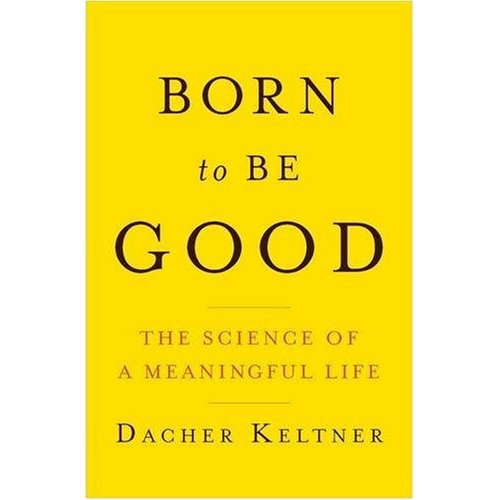loving this book
A totally fascinating look at the evolutionary origins of good (social, empathetic, kind, joyful, warm, selfless) human behavior–as well as the psychology of facial expressions and non-verbal communication. Get your pen out for underlining!
Here’s a random smattering of interesting info from the book:
- Women laugh more than men.
- Laughter and talking happen in different parts of the human throat.
- Certain facial expressions can only happen when we feel a particular emotion in our bodies.
- People laugh at all sorts of things that are not funny. Eighty percent of the time, in fact.
- Happier couples are more likely to look for a silver lining in their partner’s faults.
- What both men and women value in a potential mate the most is kindness.
- Human touch is really, really important.
It’s a complicated book, and I can’t do it justice at a glance. But if you like this type of thing–studies of human psychology applied to our daily living–this one had me reading passages out loud to my husband. Here’s one of them, from the chapter on teasing:
There is no relation more vital to the survival of our species than the intimate bond. There is no relationship more fraught with conflict or more fragile. Our ultravulnerable, big-brained offspring require more than one caretaker to survive, thus binding us into long-term caretaking relations which have no parallel in our close primate relatives. And from their moment of inception to their end, intimate relations roil with conflict, sacrifice, and matters to negotiate. In early stages of intimacy, sexual strategies–interests in short-term exchange or long-term devotion–require navigation. As children, housework, and mortgages arrive, partners can feel like beleaguered managers of a halfway house, moving from one crisis to the next . . .
So we turn to teasing to solve many problems of intimate life . . . With age, as sexual partners move in with one another, sharing the contact of everyday life, partners develop their own personal idiom, including provocative names and teasing insults. Partners develop teasing insults about each other’s sexual proclivities, their bodily functions, their sleep habits, their manner of eating, the anachronistic hairstyle they dogmatically prefer–all threats to connubial bliss. These teasing insults mark partners’ quirks and foibles as deviant, and problematic if carried to extremes, but endearing foibles nonetheless, uniquely appreciated by the partner. Studies of married partners find that partners with richer vocabulary of teasing insults are happier and enjoy a better long-term prognosis.


This book sounds fabulous. I especially agree that “People laugh at all sorts of things that are not funny. Eighty percent of the time, in fact.” I think most laughter is an almost nervous reaction, especially in a group setting.
I may have to put this one on my amazon wish list…
Thanks for the tip! I will definitely be purchasing this in the near future. I see I’ll need to brush up on my vocabulary too.